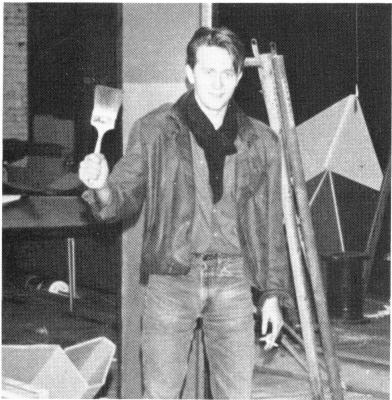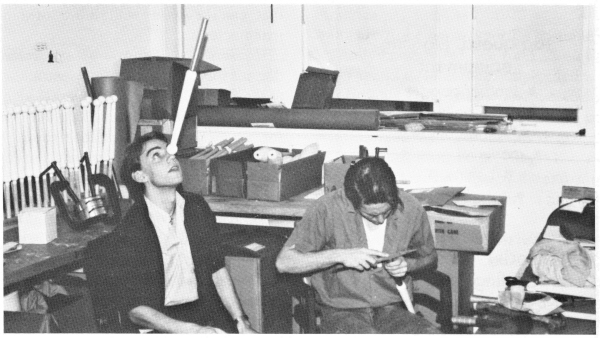|
Then
to now... Getting
started wasn't the easiest thing to do. In fact, Smith says his most
unfortunate decision was made just after he set up shop. While in
college, he had "lucked" into a mold which, although not
designed for juggling, could be used for his early efforts. Now that
he was full
He
thought he had found the right mold maker (he was, Smith claims, the
most expensive to boot). However, the finished product did not meet
Smith's tolerance specifications, and a two-year lawsuit ensued. It
was eventually settled out of court.
Learning
from experience (expensive experience - a mold costs about $2,000),
Smith went to a firm that subcontracted the job to another mold maker.
Since the company did six-figure business with the mold maker, they
had the clout to make sure the job was done right. Getting quality
supplies and reliable suppliers is an ongoing problem for many
manufacturers. Smith talked about finding the right quality of Mylar
for the decoration of the club and to cover the wood handle. Just as
he placed his first order, the manufacturer declared Chapter 11
bankruptcy.
Nevertheless, Smith kept finding solutions and improving the design of his props and their manufacturing techniques. Today, he has favorite and least favorite props. The most favorite (and the "highest tech" item in the line) are silicone balls, which he began offering at Christmas 1983. The manufacturing techniques took nine months to develop. There were challenges in finding the right type of silicone, the right molds and the right way to pour the silicone into the molds. It takes about a half-hour to clear and prep the molds and get the silicone ready to pour.
Once in the mold, the silicone must cure for 24 hours. Even today, Smith has occasional rejects, "at which point, they become my least favorite props!"
Fortunately,
Smith has gotten rejects down to a minimum, which makes cigar boxes
his least favorite props. The box is assembled with nails, not
staples. The assembly of the six sides of a box requires 12 internal
struts and 48 nails, each of which has to be countersunk. A set of
three boxes requires the better part of the afternoon to make. He
says they are a "moneylosing proposition."
While
Bryant works only part time, Smith puts in long hours. His
typical day starts at 9 a.m. and continues until 4:30 p.m. when UPS
comes by for the daily shipment. After a couple of hours for dinner,
he works until 1 or 2 in the morning. Watching the pair assemble clubs
and torches, one is struck with both the minddulling repetition and
the attention they muster to their duties.
For
example, Bryant starts hand painting the Classic torch bodies after a
jobshopper has turned them on an automatic lathe and sanded them.
After inspection for cracks, Bryant first lays down a primer, then two
coats of white paint, sanding each coat after it dries. Meanwhile,
Smith cuts extruded aluminum pipe to length, deburs the ends and sands
it to make it shiny. The pipes are press-fitted over the torch. The
wicking material, Kevlar, is hand-wrapped about the end of the pipe
and then two screws inserted to hold the whole assemblage together.
The amount of hand labor involved is astounding.
Not
all products are made in-house, however. The velour beanbags are
made by Zen Products, lacrosse balls are imported from Canada and Ben
Decker occasionally supplies rings.
Smith
is moving his shop out of Shaker Heights and into Cleveland's infamous
"Flats," having just signed a five-year lease for half a floor
of a building undergoing renovation. His new space, scheduled to open
March 1, will almost triple his current size. The 18 foot ceilings
"make product testing a lot easier," he quipped.
He
will also be able to consolidate all his operations. Currently some
assembly is performed in his father's workshop, while outside firms turn
his torch bodies and diecut Mylar trim.
|

